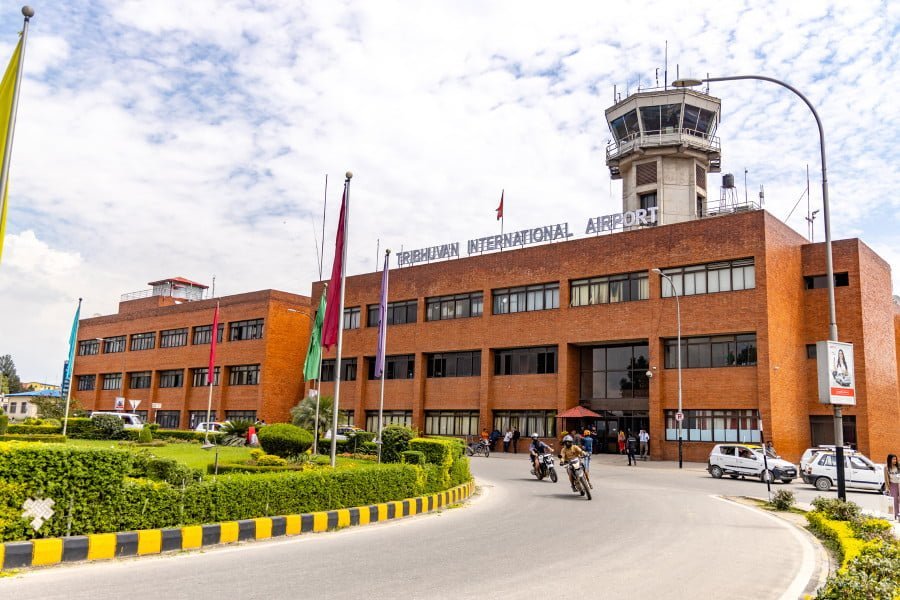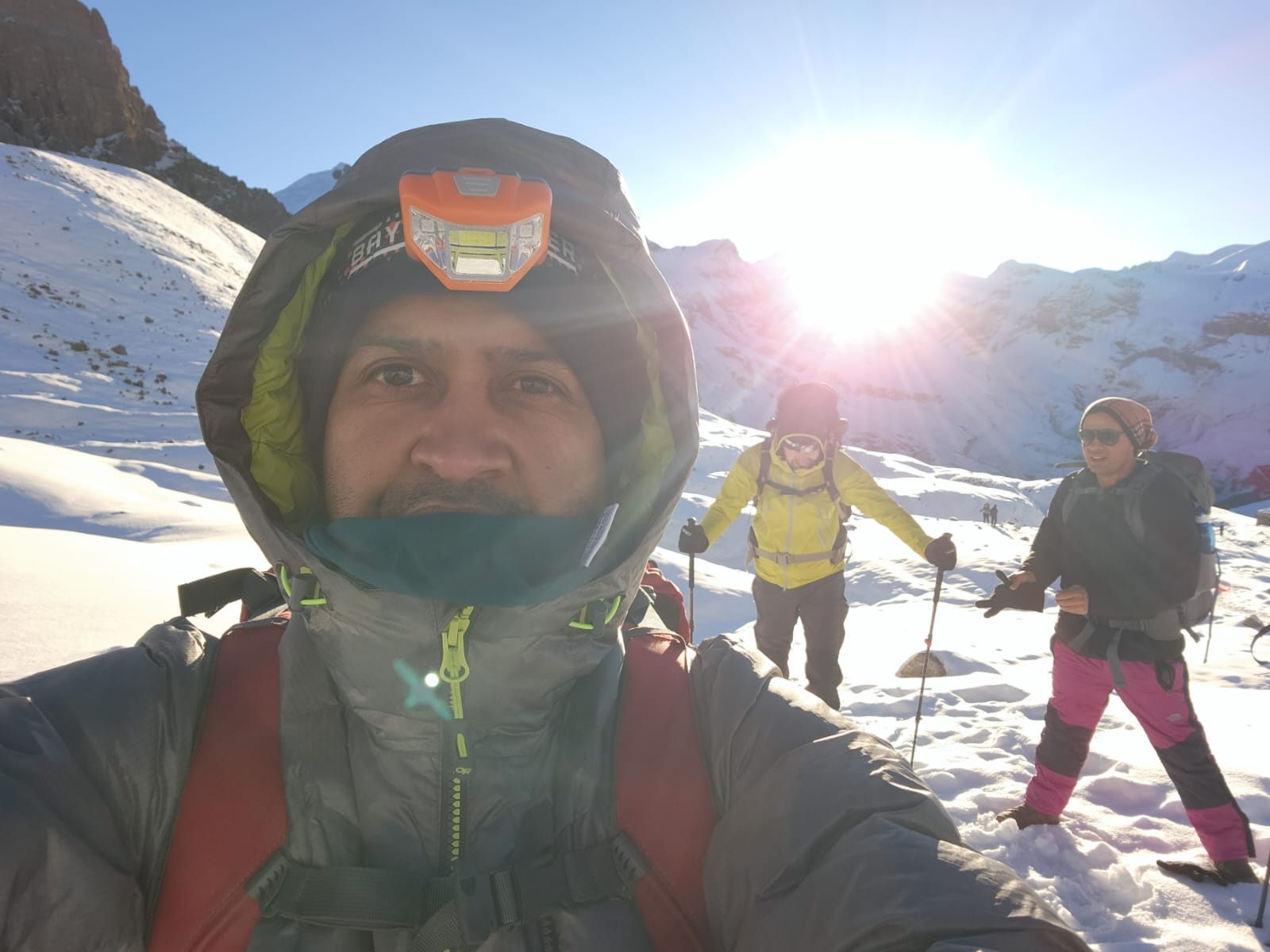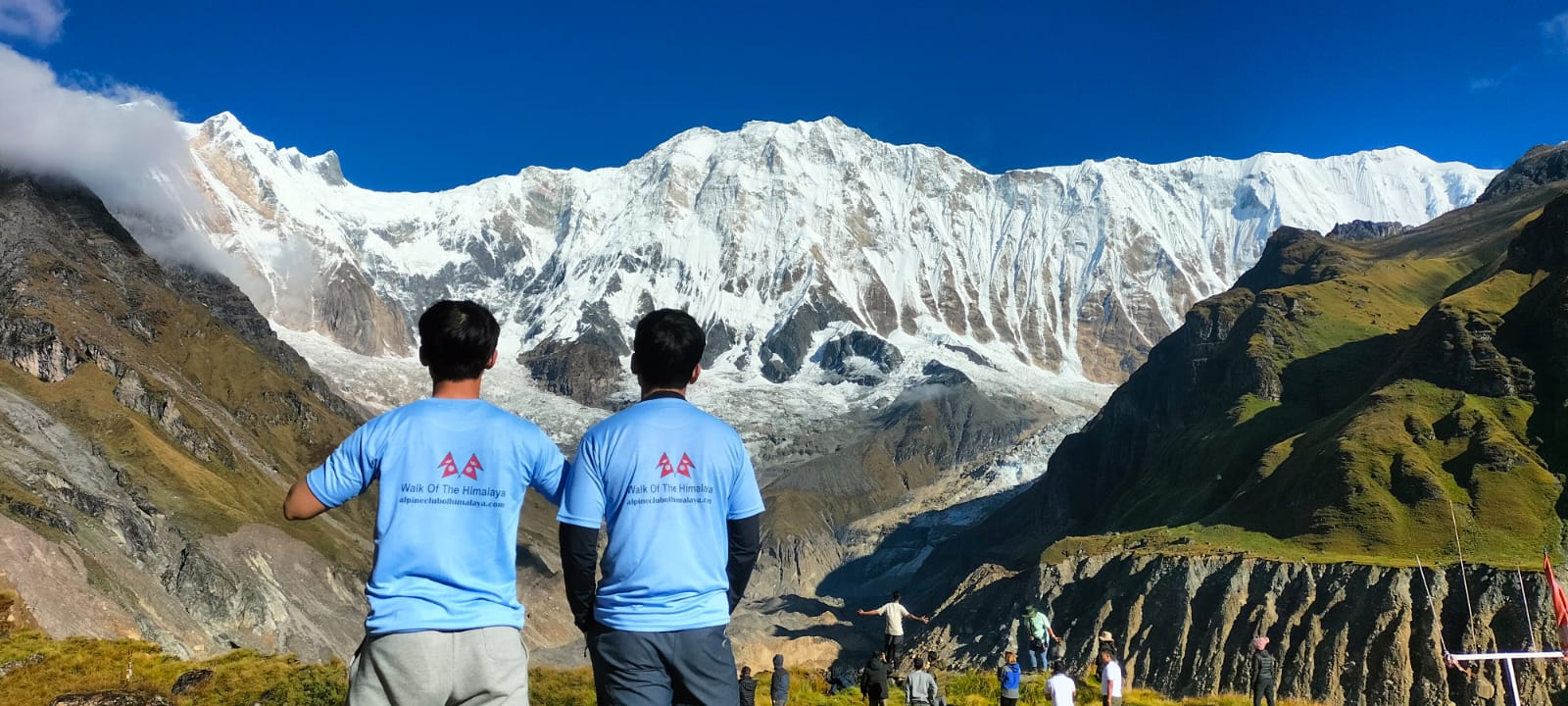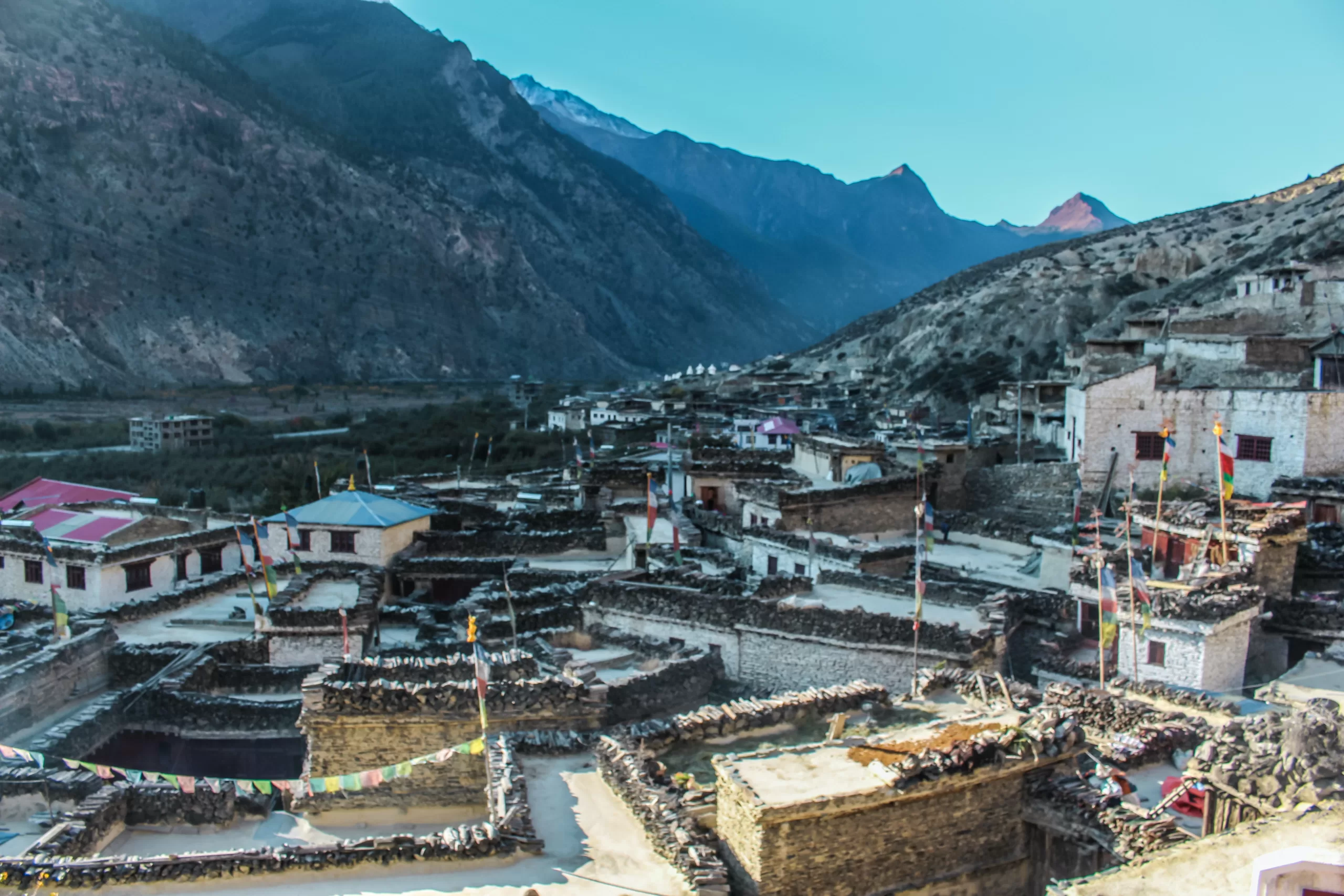Overview
Join Alpine Club of Himalaya’s trekking expedition to Kailash via Simikot with visits to four UNESCO World Heritage Sites in Kathmandu. We then fly to Nepalgunj, a city in the western Terai plains of Nepal followed by a visit to one of the most remote towns of Nepal, Simikot. We travel along ancient pilgrimage routes, and trek across the border into Tibet. On our 20-day journey we also circumambulate the holy Kailash and tour Mansarovar Lake, both of which hold great cultural and religious significance. Another important aspect of the trip is the opportunity to visit the Garuda valley, a place believed to be the cradle of the Tibetan civilization during the ancient times when Bon religion was practiced throughout Tibet, long before Buddhism was introduced.
Trip Highlight
- Kathmandu Valley Sightseeing
- Culture and History
- Mount Kailash
- Mountain Views
- Himalayan Range
Itinerary
You will be welcomed by an amazing view of The Himalayas as you approach Kathmandu. At the airport, you will be welcomed by a representative of Alpine Club of Himalaya. In the evening, you will be served excellent authentic Nepalese cuisine which will introduce you to the country’s food culture. Overnight in Kathmandu.
We depart in the morning to the Pashupatinath temple, a famous 5th century Hindu temple dedicated to Lord Shiva located on the banks of the Bagmati River. We then tour Boudhanath, one of the holiest Buddhist stupas, and the Patan Darbar square that has heritage buildings representing the four kingdoms (Kantipur, Lalitpur, Bhaktapur, Kirtipur) in Nepal. Overnight in Kathmandu.
We take an hour-long flight from Kathmandu to Nepalgunj, located in Western Nepal. Nepalgunj, a town near the Nepal-India border, is also the gateway to Simikot, Humla. The town itself is an interesting Terai town that showcases the diverse culture of Nepal. In Nepalgunj, we visit the local market, mini zoo and nearby villages. Overnight in Nepalgunj.
We take a 40-minute flight from Nepalgunj to Simikot and admire the beauty of the soaring mountain cliffs from our plane. Simikot, the headquarters of the Humla District, is cut off from the rest of the country due to its remoteness. We have lunch at Simikot and register for the permit at the police office. From Simikot, we ascend for a while, then descend towards the village of Tuling. We continue walking through jungles and villages along the Karnali River towards Dharapori. Overnight in Dharapori.
We begin our walk on a relatively flat trail at the Karnali River, then through the fields cultivated mainly with barley, buckwheat, rice and potatoes. There are two hot springs near Kermi where we may relax a little. We can also visit ancient Buddhist monasteries close to Kermi; Laikyo Gompa and Lhundrup Choeling Gompa. Overnight in Kermi.
We trek on a steep ascent to a small pass then cross a suspension bridge over the Salli River. From here one can enjoy views of the beautiful pine trees and the mighty Karnali River. We will also visit the remote Namkha Khyung Dzong Monastery. Overnight in Yalbang.
We walk on a trail above the Karnali River. As we ascend further, the greenery begins to vanish giving way to pine trees and rocky hills. After reaching Tumkot, we visit the Dhungkar Choezom Monastery, one of the most important Sakya monasteries in the Tibetan region. Overnight in Tumkot.
Today’s trek is on a relatively easy trail above the Karnali River. After walking a few miles we begin to notice the change in climate, vegetation, and landscape which becomes more rocky and secluded. The trees that you see are now short and low junipers. Overnight in Yari.
We cross the first pass of the trek today, the Nara La pass (4,620m), and will be greeted by excellent views of the beautiful Tibetan plateau and Yari Village. From here on, it is a shaky descent down until Hilsa, a border town which is also a dropping point for the pilgrims on their way to Mt. Kailash by helicopter. Overnight in Hilsa.
We walk across the Friendship bridge at Hilsa where the Chinese officials will check our permits and passports. We also meet our Tibetan guide here. We ascend from Hilsa to Purang and pass Rinzin Zangpo Gompa and Kangje Village along the way. In Purang, we visit the ancient Purang Gompa and explore the unique Buddhist frescoes of IIX century. Overnight in Purang.
We begin our journey to Montser via the Rakshas and Mansarovar lakes. Upon reaching Montser, we visit Tirtapuri (4510m). Located northwest of Mount Kailash, the Tirthapuri Hot Springs are closely associated with Padmasambhava (Guru Rinpoche). Pilgrims bathe in pools fed by the springs, visit the monastery containing the guru’s footprint and dig for healing stones along a one-hour pilgrimage route. After touring Tirtapuri we return to Montser. Overnight in Montser.
It takes us around 2 hours to reach the Garuda Valley that lies to the southwest of Mount Kailash. It contains mysterious caves, some of which have never been explored. Many believe that this was the cradle of the Tibetan civilization during the time of the Shang Shung kings, long before Buddhism. For those interested in archeological and historical sites, Garuda Valley will be a dream come true. After touring the amazing valley we move to Darchen, a small town situated right in front of the sacred Mount Kailash. Overnight in Darchen
Today, we begin our Kora of Mt. Kailash. We take a six-hour hike in a deep valley through walls of red rock, and continue across the plain to Shershong. We further cross a bridge leading to Chuku Gompa high on the hill visible from the valley. The trail leads to Dirapuk from where we will have a stunning view of the north face of Mt. Kailash. Overnight in Dirapuk.
Today will be the most difficult section of our journey. We climb Drolma-la Pass at 5,750m/19,910ft. The pass whose name literally means the pass of Tara is beautiful and is filled with five-colored praying flags. From Drolma-la Pass, we descend to Dzutul-puk, where we come across the incredible Thugje Zinbu (Lake of Compassion) and a few ancient caves. Overnight in Dzutul-puk.
We gradually wind out of the valley towards Barka plain. After completing the holy Kora of Mount Kailash at Darchen, we drive for 2 hours to Mansarovar Lake. The lake holds religious significance for both Hindus and Buddhists. Overnight in Mansarovar.
Today, we circumambulate the beautiful Mansarovar Lake which has a circumference of 90 km making it one of the highest fresh water lakes in the world. Like Mount Kailash, the sacred blue and emerald green Lake Mansarovar that lies at a height of 15,015 ft, is known to be an epitome of purity, containing healing properties and the power to cleanse all mortal sins.
Those who have visited the holy spots of Lake Mansarovar and Kailash carry with them a memory of a lifetime which remind them of the presence of Lord Shiva in their lives and gives them a feeling of peace and tranquility. The pristine beauty, magnificence, and serenity of these religious sites is truly awe inspiring and instills in people the feeling of being one with Shiva. You can perform a holy dip in the spectacular Mansarovar Lake and explore the area. Overnight in Mansarovar.
We take a long drive from Mansarovar to Saga traversing through the sacred historic Chiu Monastery, Hor Quo, and the Mayum La pass (5,200m). This journey covers 270 km from Mansarovar to Paryang and adjoins Saga, 255 km away from Paryang. From Saga instead of going towards Lhasa, we drive along a different route to Kathmandu. Overnight in Saga.
We will drive to Nyalam, and on the way, enjoy fabulous views of two spectacular passes, the Thong La pass (5050m/16,568ft) and Lalung La pass (5082m/16,668 ft), and the Himalayan mountain range including Mt. Everest (8848m/29,028 ft), Shishapangma (8,013m/26,289 ft), and Gaurishanker, We will also cross the holy river Bhramaputra. We finally reach the border town of Zhangmu. Overnight in Zhangmu.
We take a 30-minute drive from Zhangmu to Kodari where we must pass the Tibetan immigration checkpoint.
Upon crossing the Sino-Nepal Friendship Bridge over the Bhote Koshi River, you will be greeted by our Alpine Club of Himalaya representative. You bid goodbye to your Tibetan guide and drive back to Kathmandu. Overnight in Kathmandu.
Representatives of Alpine Club of Himalaya will transport you to the airport.
Cost Include
- Pickups and drops from airport(s) and Hotel(s)
- Hotel Kathmandu and Nepalgunj. Teahouse during the trek
- Breakfast in Kathmandu and Nepalgunj and all meals while trekking in Nepal (only)
- One day sightseeing in Kathmandu by comfortable private vehicle
- Flight from Kathmandu to Nepalgunj and from Nepalgunj to Simikot with airport departure taxes
- Assistance in acquiring the Chinese visa
- All necessary permit(s) and entry fees (including Tibet Travel Permit)
- Tibet border (Zhang-Mu) to Kathmandu transportation by comfortable vehicle
- Hilsa, Kailash, Garuda valley, Zhang-Mu transfer by Private vehicles (van or Hiace or bus)
- English-speaking, trained and experienced guide(s)
- Fees for porter or horse from Simikot to Hilsa and during Kora
- T-Shirt, sleeping bag , down jacket and duffle bag
- All applicable taxes and service charges
- lake Mansorver Kora bus fee
- All necessary paper work
Cost Exclude
- All international airfares
- Chinese visa fee
- Accommodation(s) outside the itinerary
- Lunch and Dinner (including any meal except breakfast) in Kathmandu and Nepalgunj and all meals in Tibet
- Travel and rescue insurance
- Extra cost in the event of landslide for hiring additional transportation and porters
- Horse rental while on Parikrama (approx Cost US $200) or personal porter (Approx Cost US $100)
- Emergency evacuation costs (cost for renting a Land Cruiser) (medical and rescue insurance is recommended). We advise you to purchase insurance with a zero deductible.
- Personal expenses, e.g. phone call, laundry, bar bills, photography charges, web usage, and telephone Calls
- Tips for guides, drivers, cooks, porters, etc.
FAQs
Your safety is of paramount importance to us at Alpine Club of Himalaya. We have the absolute authority to cancel the trip or change the itinerary, when deemed necessary or when we have reason to believe your safety is at stake. Weather conditions, the health condition of a group member, natural disasters, and such, can contribute to changes in the itinerary when traveling in remote mountainous regions. In these extreme situations, we kindly request that you offer your full co-operation to the trusted leader of the group appointed by Alpine Club of Himalaya. However, we assure you that we will make every effort to keep to the above itinerary.















Write a Review